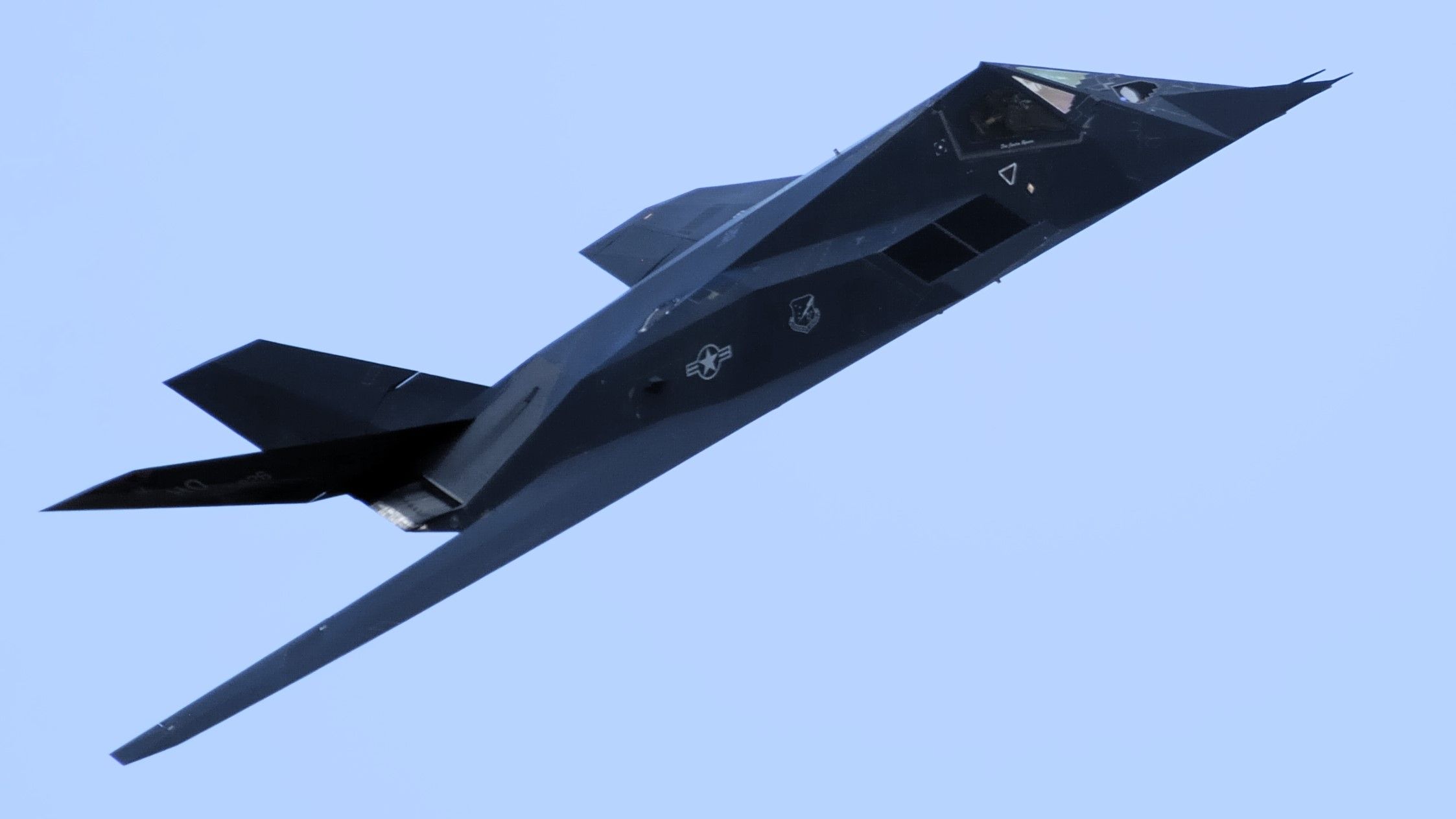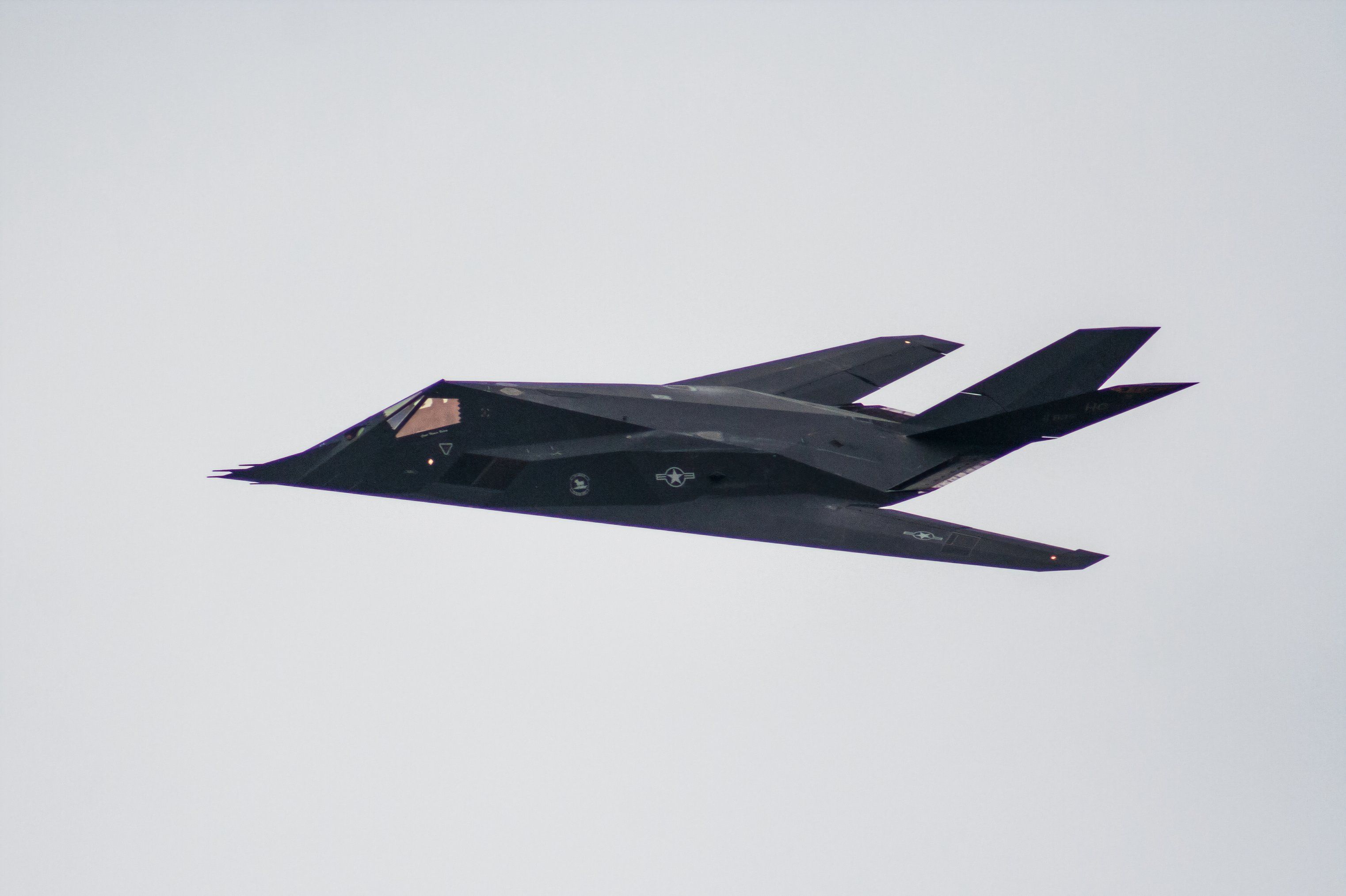Summary
- The F-117 Nighthawk has a radar cross section of 0.003m2, making it hard to detect, track, and requires specialized radars.
- Efforts to reduce the F-117’s infrared signature include cooling exhaust and using black skin, making it low observable but not invisible.
- The F-117’s low radar signature remains useful, being restored for exercises to help modern fighter pilots scrimmage against stealth weapons.
The Lockheed Martin F-117 Nighthawk is considered the benchmark stealth aircraft as the first stealth fighter employed in combat. But how stealthy is the F-117 Nighthawk really?
The F-117A’s radar cross-section
The Lockheed Martin F-117A Nighthawk was optimized for being stealthy and reducing its visibility to the radar parts of the electromagnetic spectrum. What an object reflects in radar bandwidth is what radar sees and reports back to the humans observing. So if an aircraft could be designed to reduce its radar return, the aircraft would be more stealthy. One can read the details below:

Related
How Do Stealth Aircraft Avoid Radar?
Radar stealth involves complicated technology and careful engineering of an aircraft’s materials and shapes.
Additionally, according to an Air Force Magazine July/August 2019 infographic, the F-117 has a radar cross section (RCS) of 0.003m2 square meters, or that of three insects. The F-35A has an RCS slightly more, 0.005m2 square meters. The B-2 Stealth Bomber has an RCS of 0.05m2 square meters—somewhat more. The F-16 Viper is around 4m2 square meters, depending on what is hanging off of it.
Having a RCS of three insects means that the F-117A is very hard to detect, much less track and requires radars to be modified or specialized in tracking stealth aircraft, using their speed to get a track. According to F-117A pilot retired USAF Captain Thad Darger, the F-117A had a bottom like a mirror refracting radar away. Coupled with the F-117A’s radar absorbant material absorbing radar waves, radar energy returns were made very difficult off of a decent-sized aircraft.
But radar is not the only way to find an aircraft. So too is heat.
Infrared signature reduction
The F-117A also had efforts made to reduce its infrared signature. What is infrared signature? That’s the heat signature of the aircraft and there are many detection devices that scan the infrared spectrum of electromagnetic light. Below is a good explainer how this works:
To reduce the infrared signature of the F-117A, the aircraft has its exhaust go through baffles at the rear to cool the exhaust and reduce other emissions. Additionally, black skin helps reduce visibility not just to radar but also to infrared detection. But in the end, the F-117A is only low observable but not non-observable.
Only one F-117 shot down
The F-117 will be well known for having 59 such airframes built with only one shot down in the skies over Serbia on April 17, 1999. The North Atlantic Treaty Organization, with the United States as a member, had decided to intervene against Serbian oppression of Kosovar Muslims with an air interdiction campaign called Operation Allied Force.
Photo: LFink | Shutterstock
Flying in the operation was Lt. Col. William “Brad” O’Connor who had flown F-16 Vipers and EF-111 “Sparkvarks” before being assigned the F-117A in early 1998. For Brad, this was supposed to be simple precision strikes on a mixing tower of the Baric munitions plant and the Novi Sad refinery, according to the January 8, 2018 Military Times. Instead, Brad had to face anti-aircraft artillery (AAA) and Surface-to-Air Missiles (SAMs). At least Brad, like most of his wingmen would be able to drop their laser guided bombs (LGBs) and return safely.
But for Lieutenant Colonel Dale Zeiko, sent after a Serbian command center, would be able to get his LGBs off. This would require Zeiko to open the bomb bay doors and help the altered S-125 Neva/Pechora equipment or what NATO calls the SA-3 Goa track the F-117A. But Zeiko’s attempt at egress would be met with two Serbian SAMs able to track by practice the small radar return of the F-117 while not facing Grumman EA-6B Prowler jamming and fire.
This would result in Zeiko being shot down and having to be rescued by a package of two Sikorsky MH-53 Pave Lows and a MH-60 Pave Hawk escorted by A-10 Warthogs. One can review the whole operation below:
The point of sharing this history is to remind everyone that even with a low radar cross-section (RCS) and efforts to reduce its infrared signature also, the F-117A is not invisible. Rather, the F-117A is low observable, which means it is difficult to detect.
Granted the F-117A go against Iraq’s integrated air defenses twice. First in 1991’s Operation Desert Storm and again in 2003’s Operation Iraqi Freedom. In Operation Desert Storm, the F-117A flew 1,271 sorties, achieving an 80 percent mission success rate, and suffered no losses or battle damage.
Useful even in retirement
The F-117A’s low radar signature is so useful in 2024 that some F-117As have been restored from mothballs to fly as simulated cruise missiles or drones in exercises. This way modern fighter pilots and air defenders can scrimmage tracking and fighting off such weapons.
Considering recent events in Eastern Europe and the Middle East where low observable drones are used to conduct attacks on maritime and ground targets, the ability to scrimmage against an aircraft with the radar return of three insects is incredibly helpful for air defenses. This has led to the F-117A being spotted in the 2020s. Additionally, the F-117A is being certified for refueling from the US Air Force’s new aerial refueling tanker:

Related
USAF Will Certify ‘Retired’ Lockheed F-117 Nighthawks For KC-46 Refueling
The supposedly “retired” Lockheed F-117 Nighthawk will be certified for refueling by the US Air Force’s new tanker, the Boeing KC-46 Pegasus.
Bottom line
The F-117A is a low-observable combat aircraft intended to conduct deep precision attacks behind enemy lines. As such, the F-117A is designed to refract radar energy and reduce its infrared signature. But this is not enough to 100% avoid detection.
What are your thoughts? Please share in the comments.




![6839083 - 144th Fighter Wing Welcomes F-117s to Train with F-15s [Image 2 of 8]](https://static1.simpleflyingimages.com/wordpress/wp-content/uploads/2024/03/6839083.jpg)